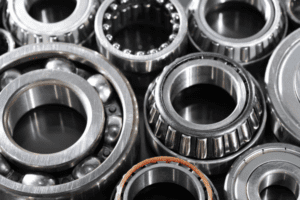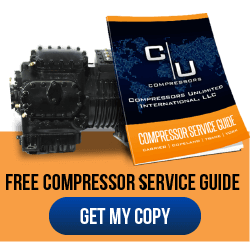Installing an HVAC compressor is not an easy task. In addition to the knowledge and experience a professional HVAC technician must have, they need to consider many different factors in order to get the best performance out of the newly installed compressor.
For a trouble-free and speedy installation, we’ve gathered below a few useful compressor installation tips.
Diagnosing the Root Cause of Failure
Identifying the main cause of compressor failure is critically important before installing a compressor replacement. In order to determine the type and extent of the damage, the technician should:
- Ohm out the compressor – If the ohmmeter reads zero or close to zero, there is a short in the winding. Conversely, an infinite ohmmeter reading indicates an open winding.
- Test for acid – Acid testing will reveal if acid is present in the system.
- Verify electrical components – The technician should also check all the electrical components, including the relays, capacitors, fuses, plugs, switches, circuit breakers, etc.
- Check the system for mechanical problems – Certain problems, such as condenser coils that become clogged with dirt and debris, can restrict the flow of refrigerant and cause temperatures to rise. This can lead to compressor failure.
Removing the Malfunctioning Compressor
The HVAC technician should ensure that the compressor replacement meets the cooling requirements of the HVAC unit. If the system has been resized for a specific cooling load, the compressor replacement must be selected in accordance with the dimensions of the new system and the thermal loads associated.
Before removing the malfunctioning compressor, the technician needs to:
- Get the necessary tools and equipment.
- Evacuate the system using approved techniques, recovery equipment, and proper safety precautions.
- Detach wiring and valves if the compressor is connected to a capacitor and remove the capacitor.
Once all these tasks have been completed, the professional can remove the old compressor.
Thoroughly Cleaning the System
Before installing the compressor replacement, please note that the HVAC system needs to be adequately flushed with flushing solvent. Here are some tips for properly cleaning the system:
- Connecting the discharge port to a re-sealable waste container is necessary in order to ensure that waste material is handled and disposed of according to applicable rules and regulations.
- Restricting solvent flow at the discharge port will increase the efficiency of the flush, while reducing the amount of flushing solvent required to clean the system.
- Purging nitrogen at 150 psi after flushing the system will remove any oil and solvent residues left behind.
- Replacing the air filter and other components that cannot be adequately cleaned with new items. Doing so will prevent contaminated components from dumping debris back into the system.
Because debris accumulation is a common cause of compressor malfunction, a complete and thorough system flush is the best way to prevent premature failure and make the most of the warranty.
Performing Proper Verifications
Before attempting to install the compressor replacement, the technician should:
- Check the refrigerant or refrigerant and oil charge of the compressor replacement. If the compressor needs to be charged, the exact type and quantity of refrigerant or refrigerant and oil charge specified must be used, according to the manufacturer’s instructions. Too much or not enough refrigerant, or the wrong oil-refrigerant ratio, can lead to irreparable damage. Also, using the wrong type of refrigerant can cause damage to gaskets and seals inside the compressor.
- Inspect the expansion valves and replace them with new items, if necessary. A stuck thermal expansion valve will allow pressure to build up inside the system, which can damage the compressor. Bypassing the filter drier core and then checking the valves with a bypass loop will allow the technician to complete this process faster. If a bypass loop has been used, it must be removed and the lines reconnected before testing the system.
Placing the HVAC System Back in Operation
Once the compressor replacement is in place, the technician should:
- Check the three-phase compressor rotation at the time the unit is put into service in order to ensure that the wires are connected correctly. Reverse operation for a long period will have a negative impact on bearings.
- Connect the capacitor, following the correct valve and wiring diagram provided by the compressor manufacturer or remanufacturer.
- Check the pressure drop across the suction line immediately after the system is placed in operation.
- Check the system for leaks.
The HVAC system is the heart of many commercial and industrial facilities. Cutting corners when replacing a malfunctioning compressor can cause the newly installed unit to fail prematurely. Conversely, complying with the manufacturer’s instructions and following expert advice can ensure the success of any HVAC compressor replacement project. Remember to also implement regular maintenance checkups to get the most out of your systems.
Now, we can only hope that the aforementioned installation tips for HVAC compressors can help you avoid some costly mistakes. For further assistance, feel free to get in touch with our experienced professionals today!












